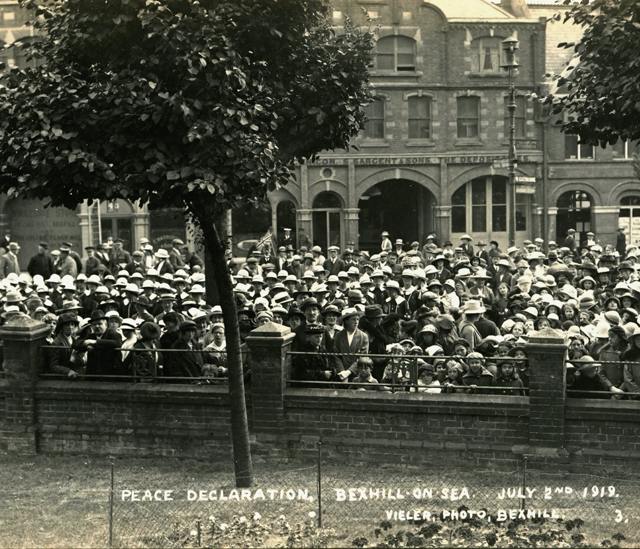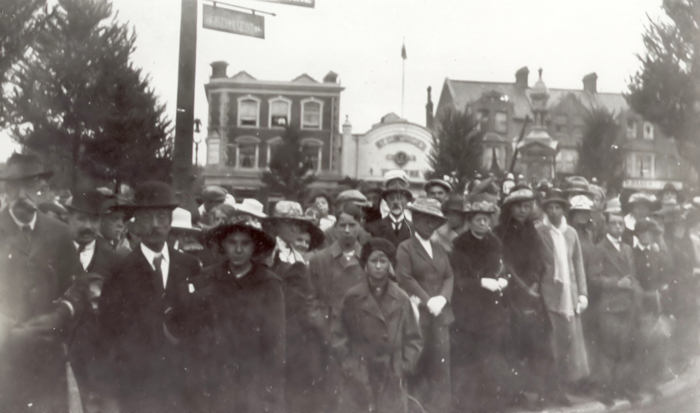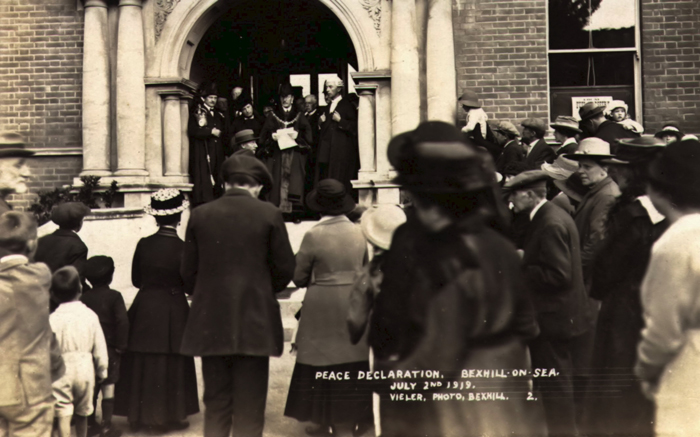While researching the present Bexhill Remembers exhibition at Bexhill Museum, it became clear that our town did have a greater role in military matters during the First World War than might first be apparent.
One would reasonably expect there to be the impact of so many people going off to war, some willingly and others less so, and that many never returned. This would be the story of any other British town and still very worthy of an exhibition in its own right, to tell the local story, but Bexhill was also the base for soldiers from different parts of the country, and indeed Empire, which gave us a wider perspective.
The formation of Cooden Camp, just north of the Cooden Beach Golf Club, in 1914 as a base for ‘Lowther’s Lambs’ the 11th, 12th and 13th Battalions of the Royal Sussex Regiment, transformed Bexhill into a garrison town, as it had been one hundred years earlier during the Napoleonic Wars. In the summer of 1915 Lowther’s Lambs departed for the front and the camp was occupied by part of the 16th Battalion of the Kings Royal Rifles and they were soon joined by the South African Heavy Artillery and part of the Royal Garrison Artillery with a small detachment of Australian Artillery.
It is the presence of the South African Artillery in the town that gives Bexhill its connection with the Two Minute Silence. Amongst the South African soldiers at Cooden Camp was Major Nugent FitzPatrick who was later tragically killed at Beaumetz in France on the 14th December 1917. Nugent was the eldest son of the famous South African writer Sir Percy FitzPatrick, who in 1919 made the suggestion to King George V that the anniversary of the Armistice be marked by two minutes of silent contemplation.
In Bexhill, the commencement and end of the Two Minute Silence is marked by the firing of a maroon or rocket from the Town Hall. This tradition began when the fire station was located behind the Town Hall on Amherst Road and the maroon was used to call out the members of the fire brigade. This was stopped when the First World War began but the maroon was fired again on the 11th November 1918 to signal to the people of Bexhill that the fighting was over.
Bexhill Museum is hosting a free event to commemorate Armistice Day from 10.30 – 12noon on Tuesday 11th November. To remember the men and women who gave their lives in the two World Wars and subsequent conflicts. Join us to observe the 2 minutes silence in our costume gallery where our Bexhill Remembers First World War exhibition is currently on show.
This will be followed by refreshments in our cafe area, when you can find out about Bexhill’s connection to the 2 minutes silence tradition, view a special commemorative film and explore our WW1 digital archives.
This event is part of our Bexhill Remembers programme, and is funded by the Heritage Lottery Fund.
This story was submitted by Julian Porter, Curator of Bexhill Museum










